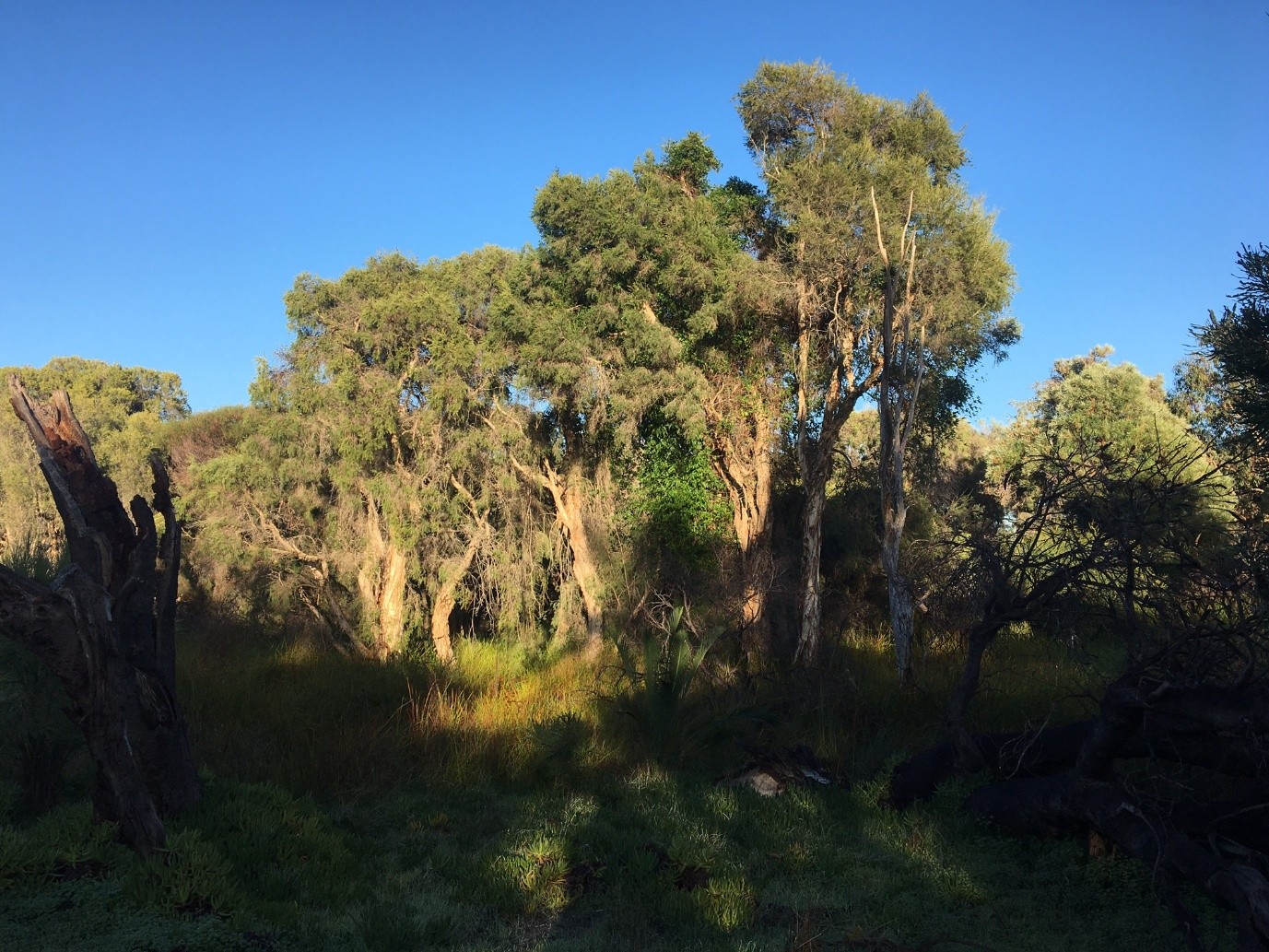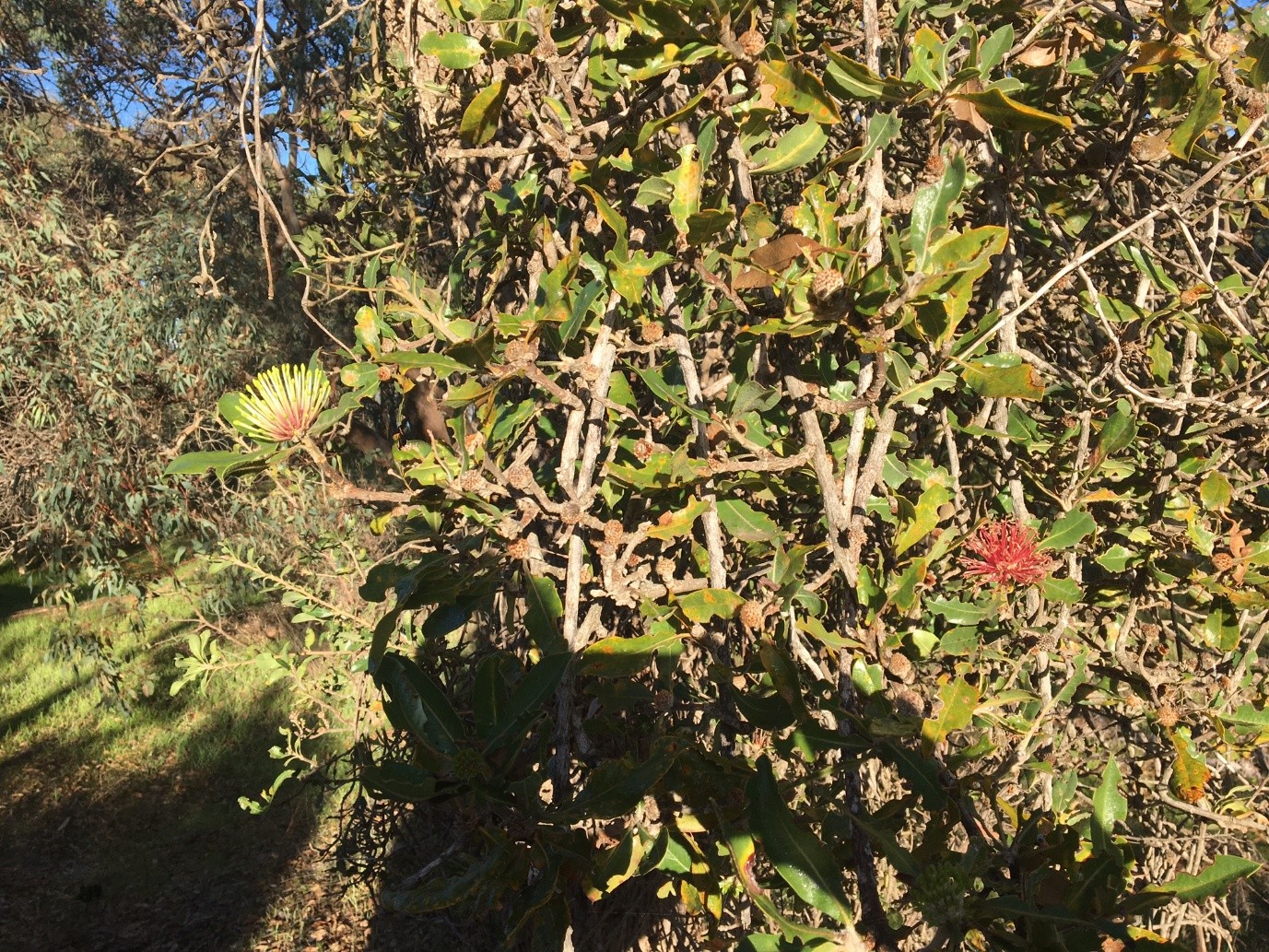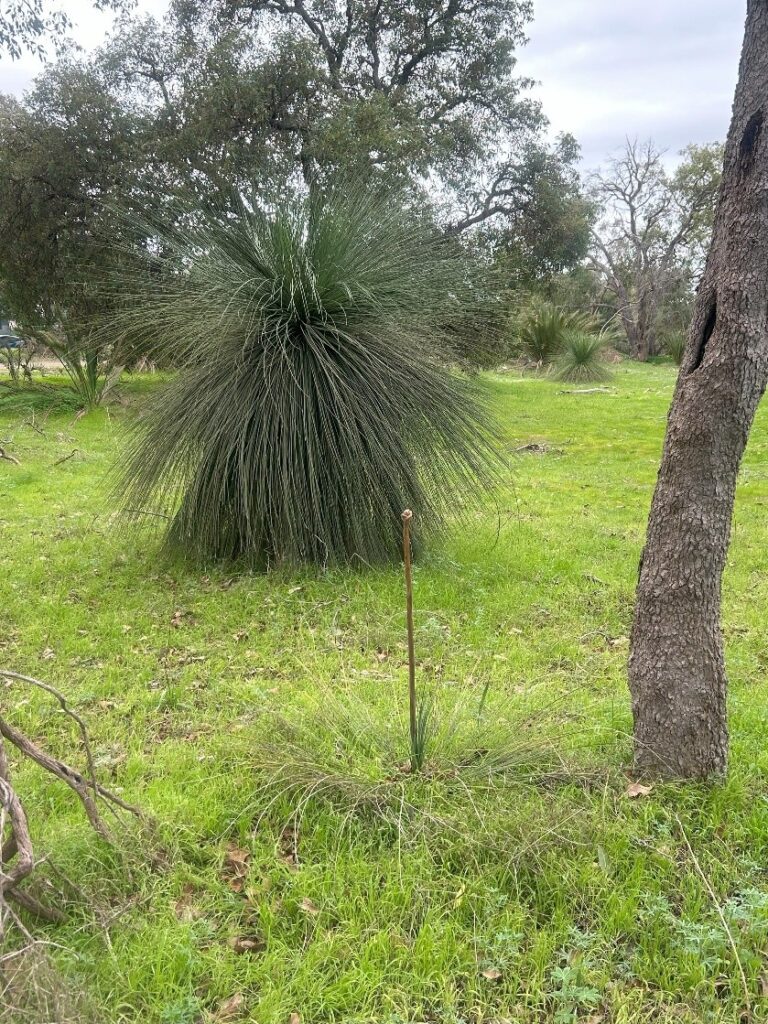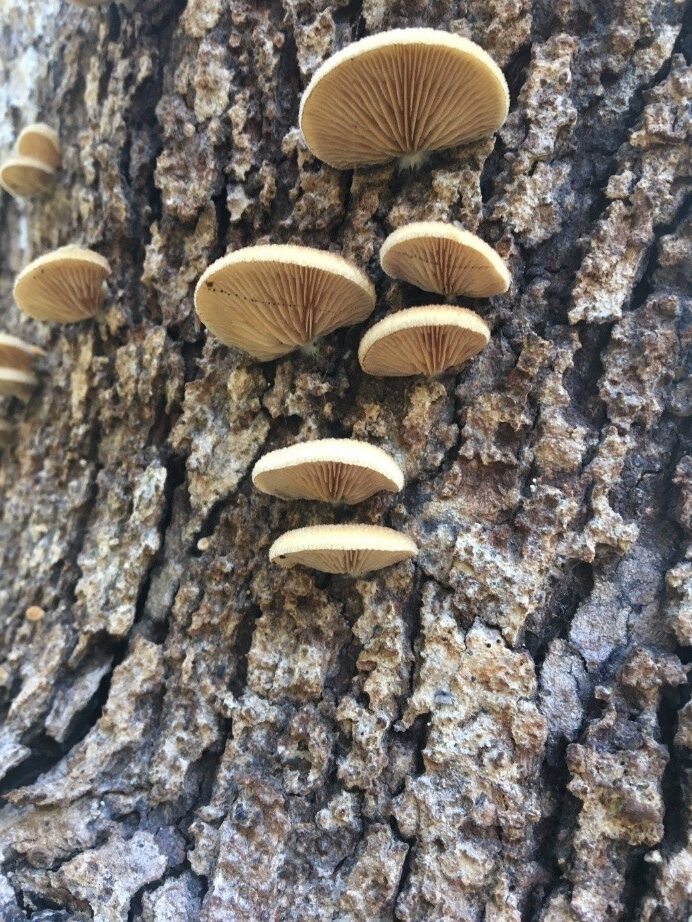Northern Suburbs Branch, 25 June 2025
Golly, it was cold this morning! A comment was made by everyone arriving at Donelly Park, Wanneroo, the meeting point for our walk around the northeast corner of Lake Joondalup, part of Yellagonga Regional Park. The temperature in Perth when most people left home was just over 4 degrees.
Despite the early start and cold temperature, all six participants agreed that it was the best walk of the year. This was due to the setting, the variation in vegetation and the number of bird species recorded. The steam rising from the pond, the early morning light on the trunks of the paperbarks and the dew-laden vegetation arching over the path warmed the heart, not the hands and feet!

The formal path we followed took us through bushland with an upper story of Flooded Gum, Marri and occasional Jarrah. In places, we came across Swamp Banksias that had just finished flowering and tall Holly-leaved Banksias bearing a mix of juvenile, white-tipped flowers and mature, reddish-pink flowers.

Candlestick or Slender Banksias were seen growing further away from the lake.
Amongst the understory plants were Zamias, Swan River Myrtle, Broom Ballart and Regelia ciliata. Xanthorrhoea preissii was common, but only a few specimens of the trunkless X. brunosis were observed.
Xanthorrhoea preissii
Image by Don Poynton


The most unusual sight for the morning was a Dianella growing in the fork of a Marri about six metres above the ground. Obviously, a bird that had eaten a ripe berry had perched on a branch above the fork some years ago!
Image by Don Poynton
Crepidotus sp.
Image by Don Poynton

A slime mould, possibly “dog vomit fungus” (Fulgo septica), was found on rotting banksia bark. In contrast, numerous trees were found to have Crepidotus sp. growing over many metres of their trunks. Thick vegetation, mainly paperbark, prevented us from getting close to the lake in most places.
We eventually found one access point which allowed us to view the Pelicans, Australasian Grebes and Eurasian Coots. Along the track to the lake, we also came across the scattered remains of some soft-shelled eggs, the sure sign a fox had dug up a turtle’s nest.
Our morning ended with a walk through a pine plantation where we had hoped to see some black cockatoos. However, while Red-tails had been seen earlier in the morning, they had left by the time of our visit. We were “rewarded” with a single Galah and a Red-capped parrot. However, overall, it had been a good morning for birds as we recorded 28 species (see page 2 for the list).
Don Poynton

